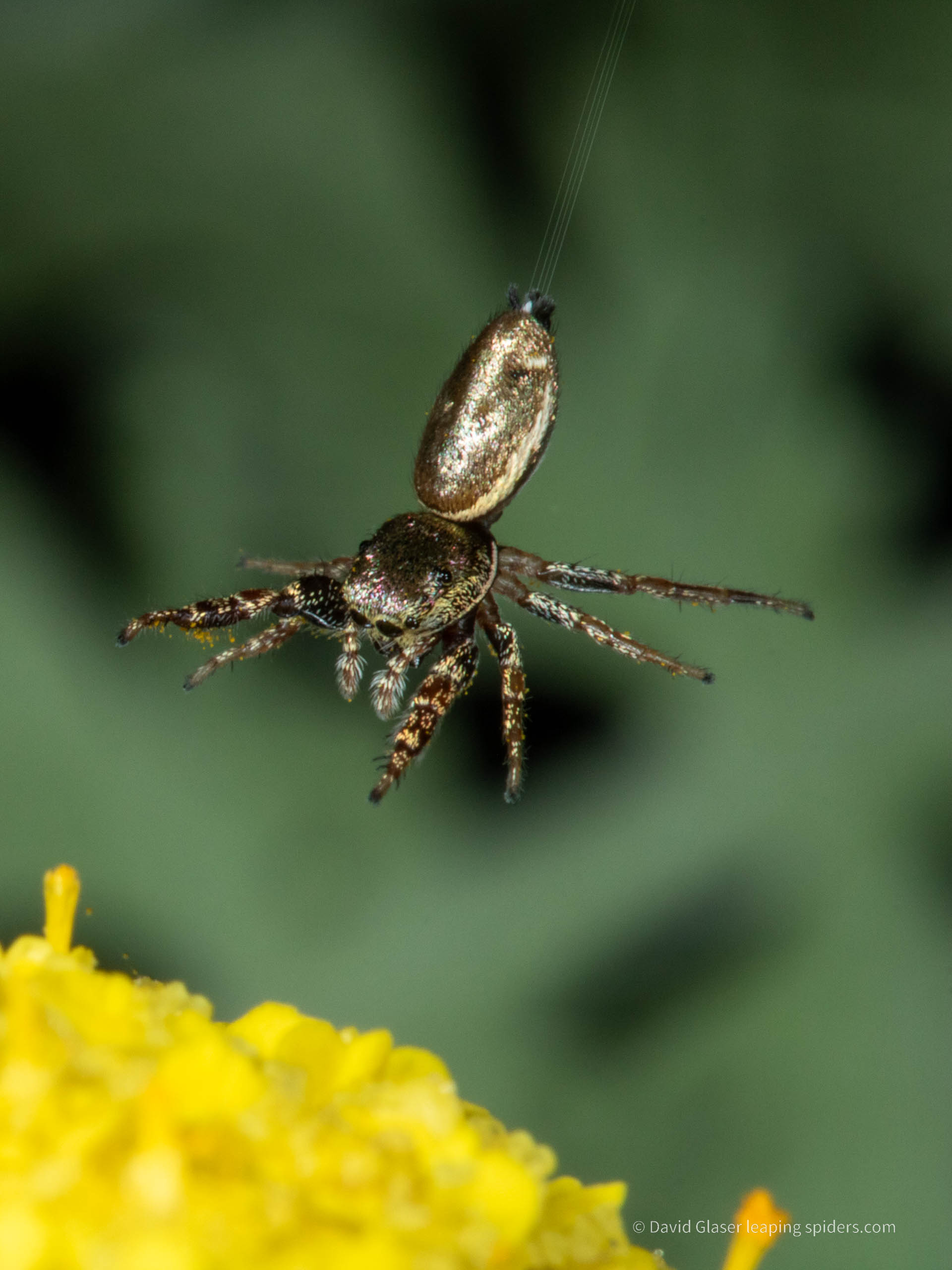
Sassacus vitis female. Before I identified this species from photos on the web, I called them “Goldies”. The adults are only 3-4 mm long. Here it can be seen that the drag line is made of four silk threads.

Sassacus vitis. Most other Salticids that I have photographed trail a pair of draglines, but this has four of them.
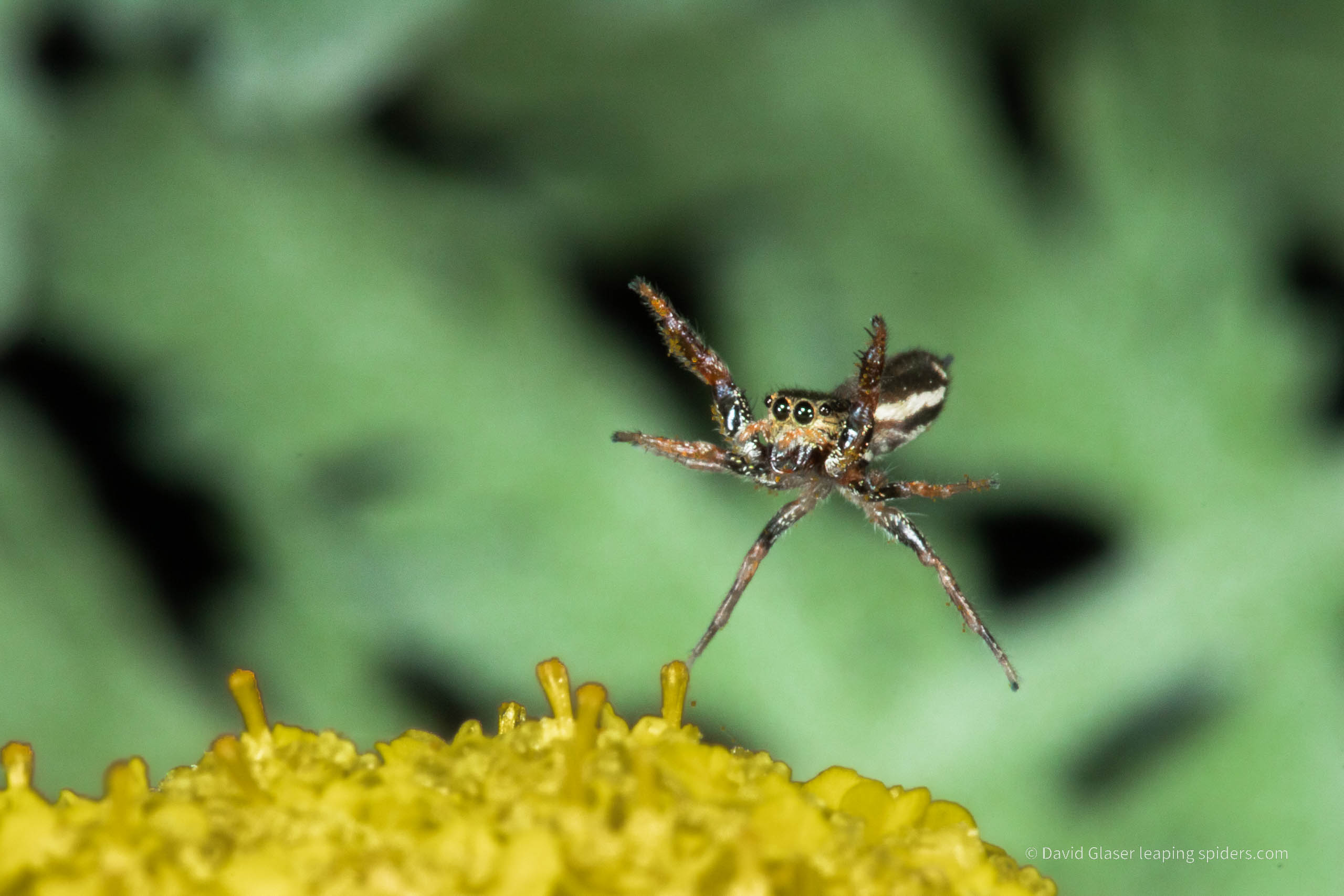
Sassacus vitis
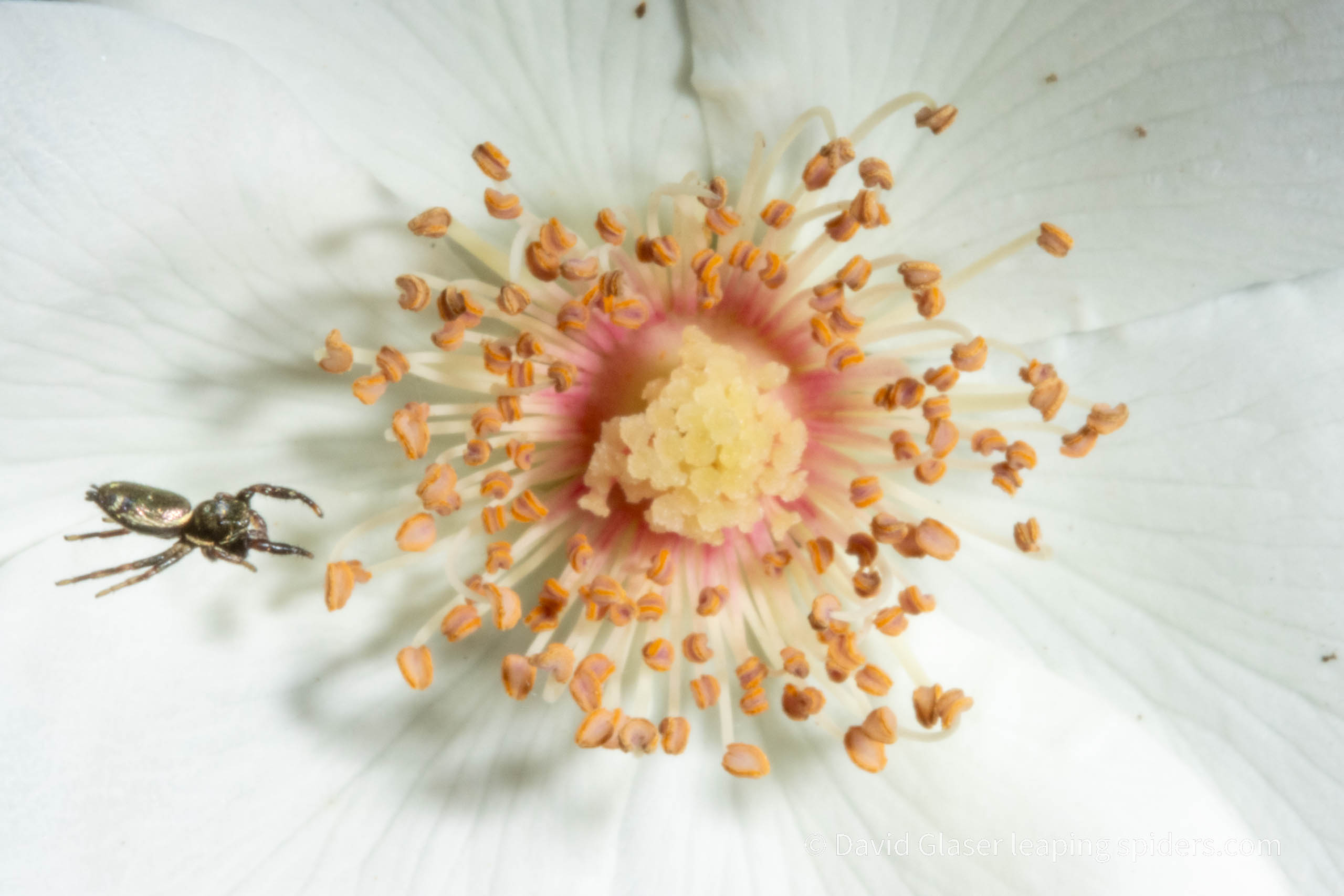
Sassacus vitis
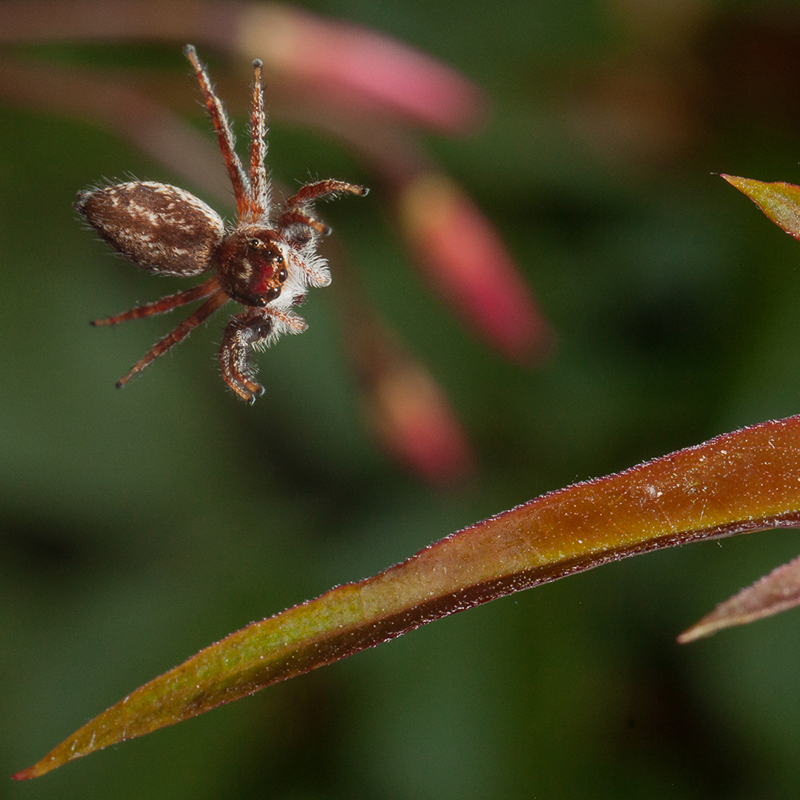
A genus/species that I haven’t identified yet, jumping among jasmine leaves and flowers.
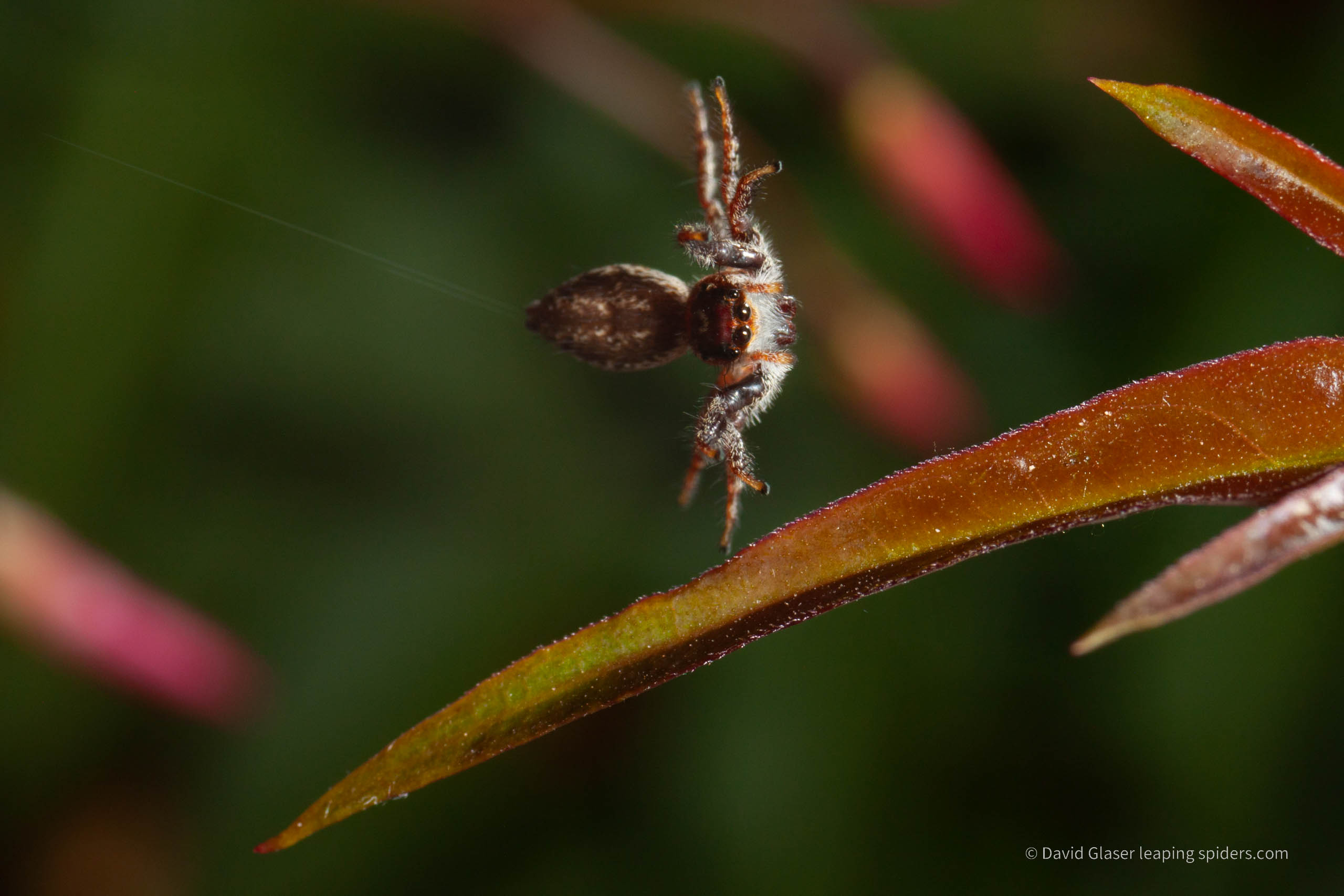
A genus/species that I haven’t identified yet, jumping among jasmine leaves and flowers.
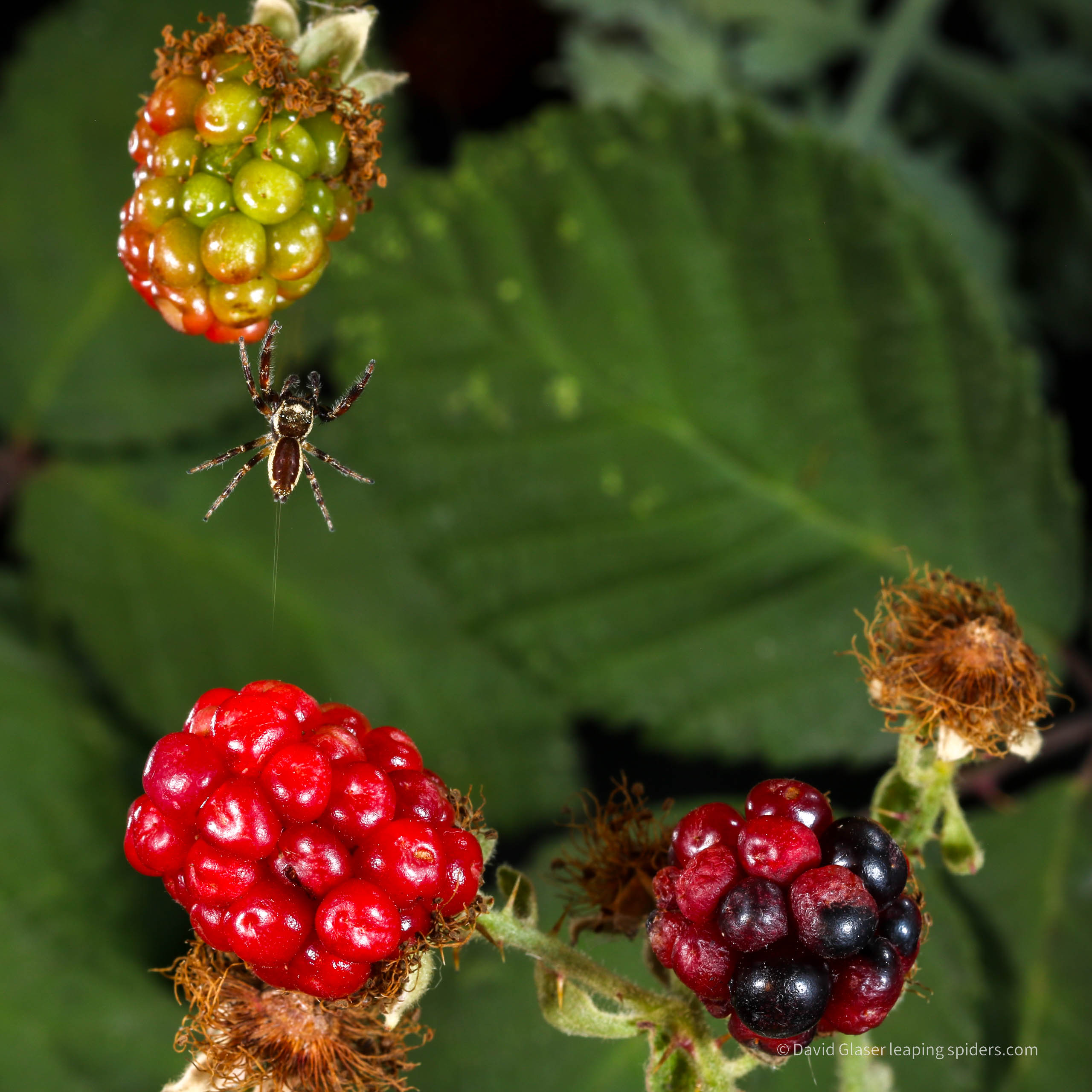
Eris militaris – Bronze Jumper – This species is common across the United States.
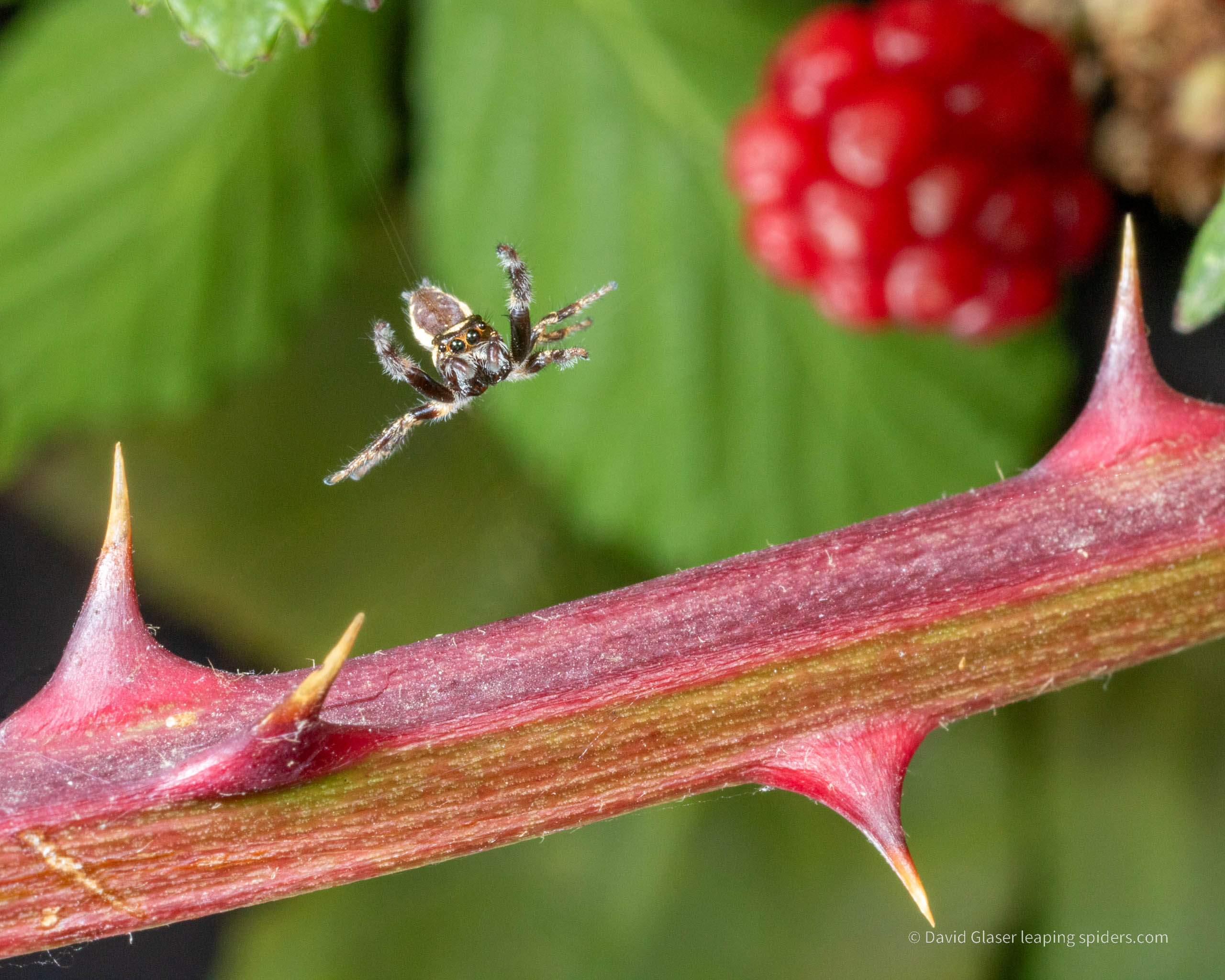
Eris militaris – Bronze Jumper
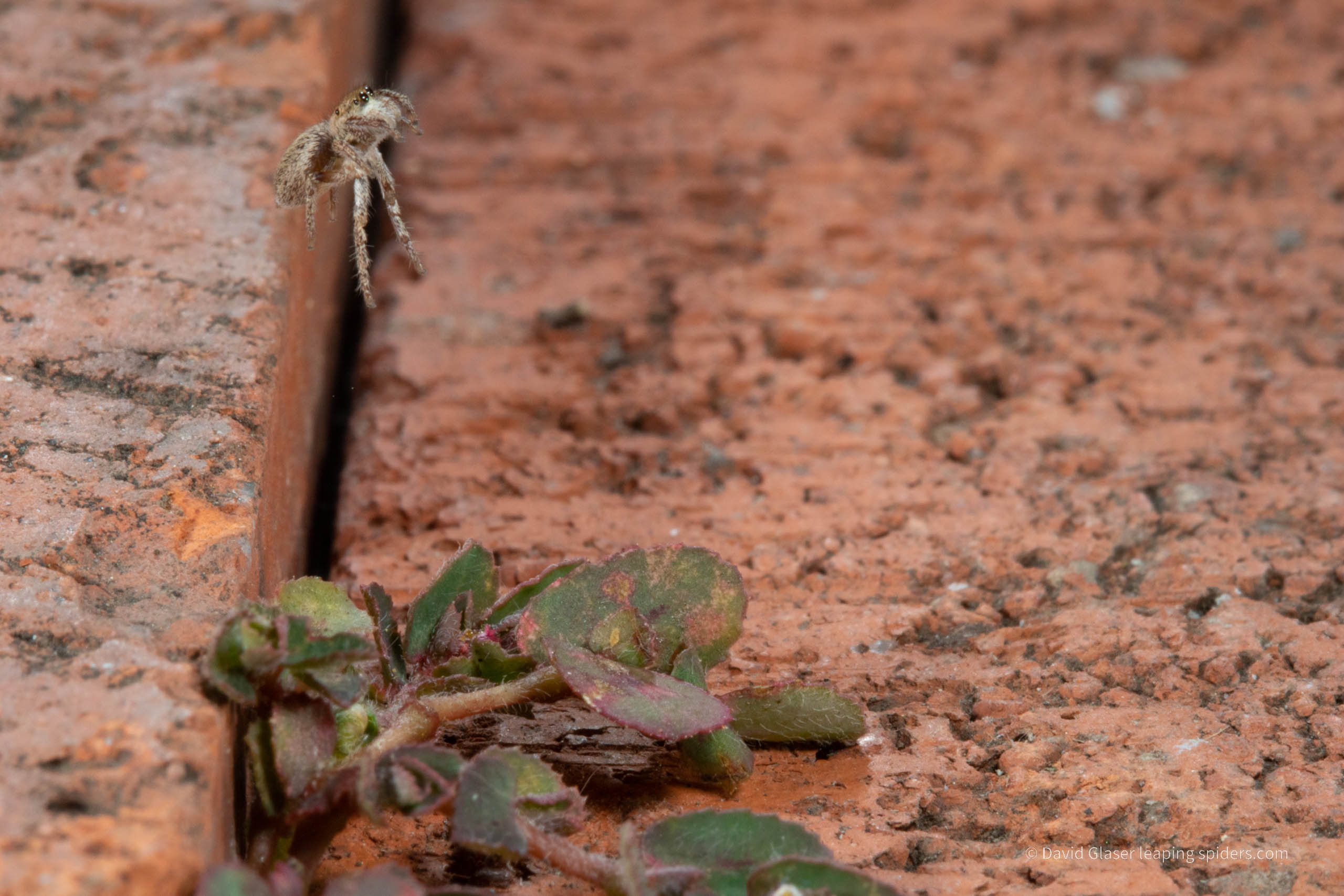
Genus Habronatus
This is a female of the genus Habronattus, collected in the San Fernando valley (Southern Califoria). Habronattus are unusual in that they live and hunt on the ground and often get around not by walking, but by a continuous series of jumps, like someone on a pogo stick. For this photo.
